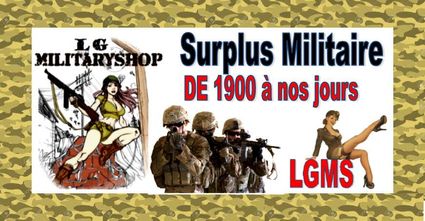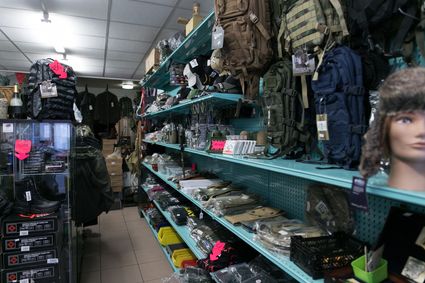SURPLUS MILITAIRE
Nous vous attendons nombreux et nombreuses sur les bourses suivante
Wavre samedi 3 mai 2025 De 7h00 à 12h00 Avenue Solvay 5 Zoning nord Wavre
Ciney dimanche 27 avril 2025 HALL 1 ALLEE 1 De 9h00 à 16h00 Rue du marché couvert 3 5590 Ciney
PROMO durant 6 jours
Pour tout achat d'un minimum de 60€
sur le site internet
sur certaines catégories
-10% avec le code HAPPY45





Sac à dos pour enfants : U.S. Army BLACK
 20.0 EUR
20.0 EUR
Sac à dos pour enfants : U.S. Army BLACK
Sac à dos pour enfants Fostex :U.S. Army Un sac à dos pour enfants en tissus avec l'Etoile Américaine.
Très joli sac à dos militaire spécialement dessiné pour les enfants.
Parfait pour l'école,
le sport ou la randonnée.
Composition: 100% coton.
Dimensions: Longueur: 36 cm / Largeur: 30 cm/ Hauteur: 17 cm
Compartiment frontal: 20 x 23 x 5 cm
WWII Military Allied Vehicle Stars
A lot in terms of WWII allied stars, was done even by "free format" and / or lost by interpretation in field orders and memo’s top down,
from command to captain, sergeant, corporal to the soldier who had to paint a vehicle.
Except that where consisted “guidelines” introduced by the allied troops like the 1942 US Army - AR 850-5 and some harder to find Commonwealth manuals.
Before the 1943 Italian Sicily campaign “Operation Husky” and later ETO 1944 France, Normandy “Overlord” / D-Day.
It was common for allied vehicles overseas to carry a simple white star as an identifier.
But in the dust and confusion of battle, the allied or “US star” could occasionally be mistaken for a German Cross at ranges over 1000 yards.
In fact, tankers and armoured units began painting out the stars to avoid becoming a casualty of ‘friendly fire’, especially from allied air units.
The problem got so bad that in this period the term “American Luftwaffe” was coined.
(This was a genuine nickname given to the 9th USAAF by allied armoured troops back then.)
Experienced units like the 2nd Armoured started painting out their stars altogether.
The (friendly) aircraft recognition circles were completely around and uninterrupted,
as well “broken” with 4 and 5 gaps, if they were made from oil board paint mask stencils.
There are even WWII photo’s with 8 gap circles.
MERK (FALLBACK): Fostex Garments